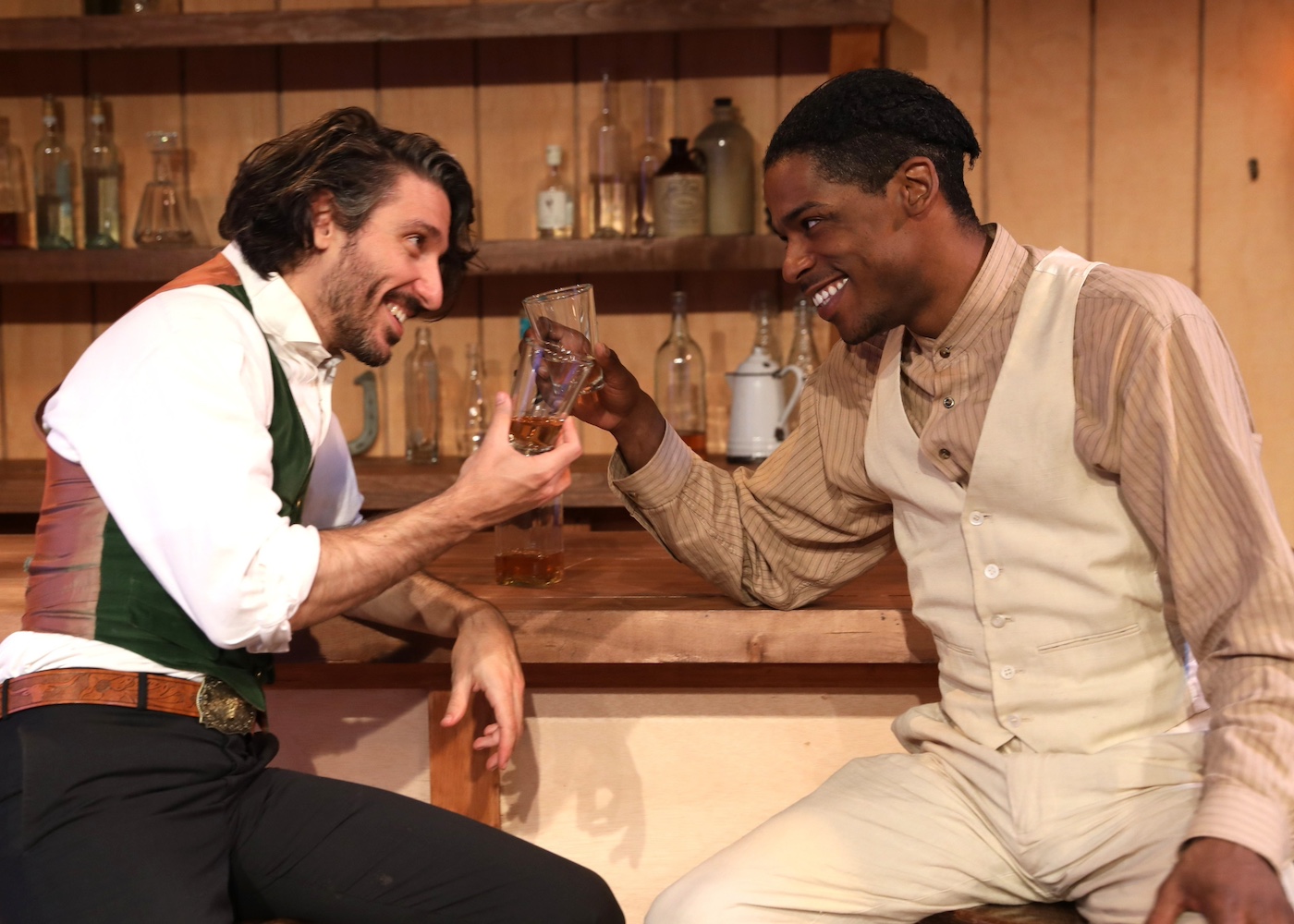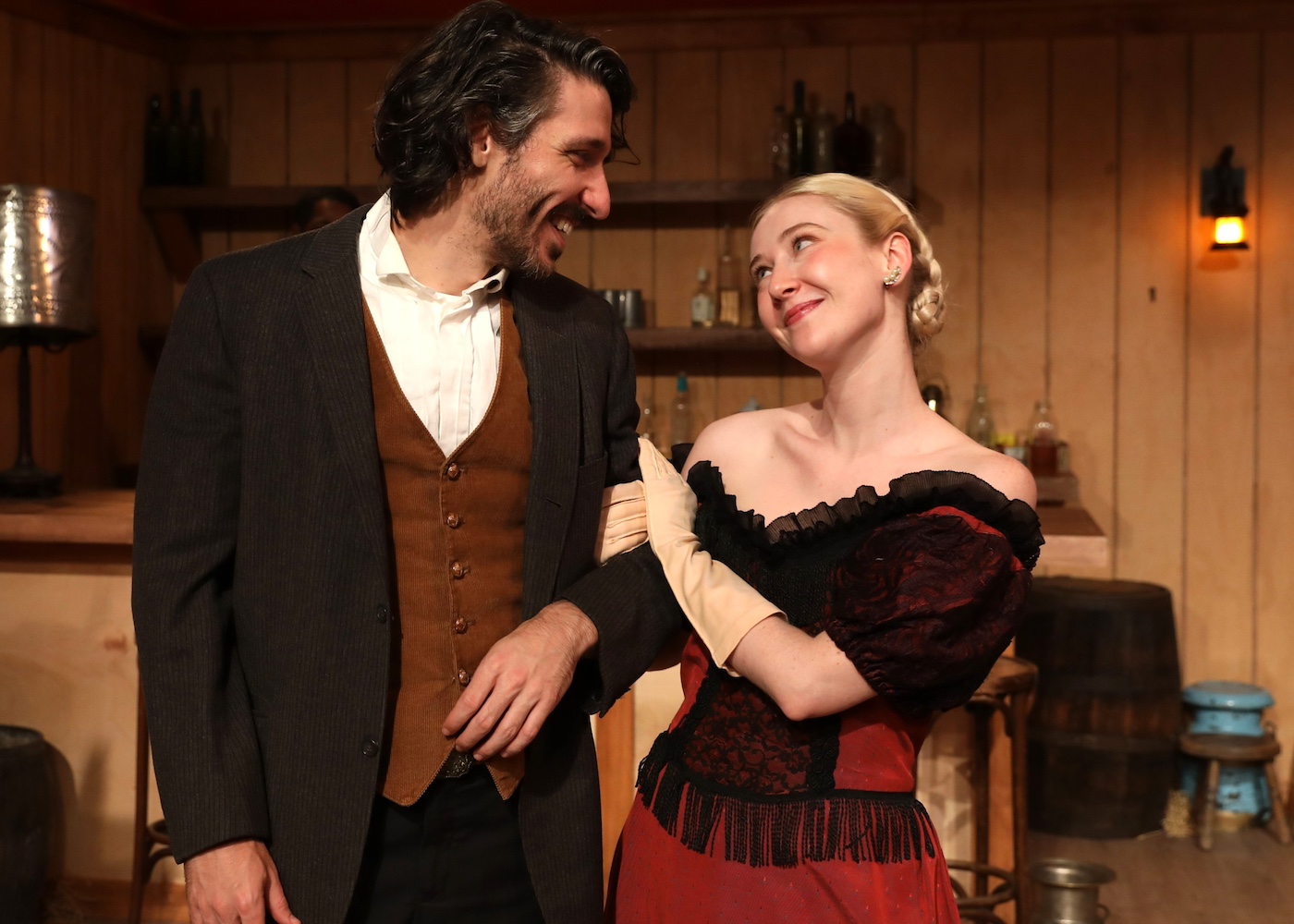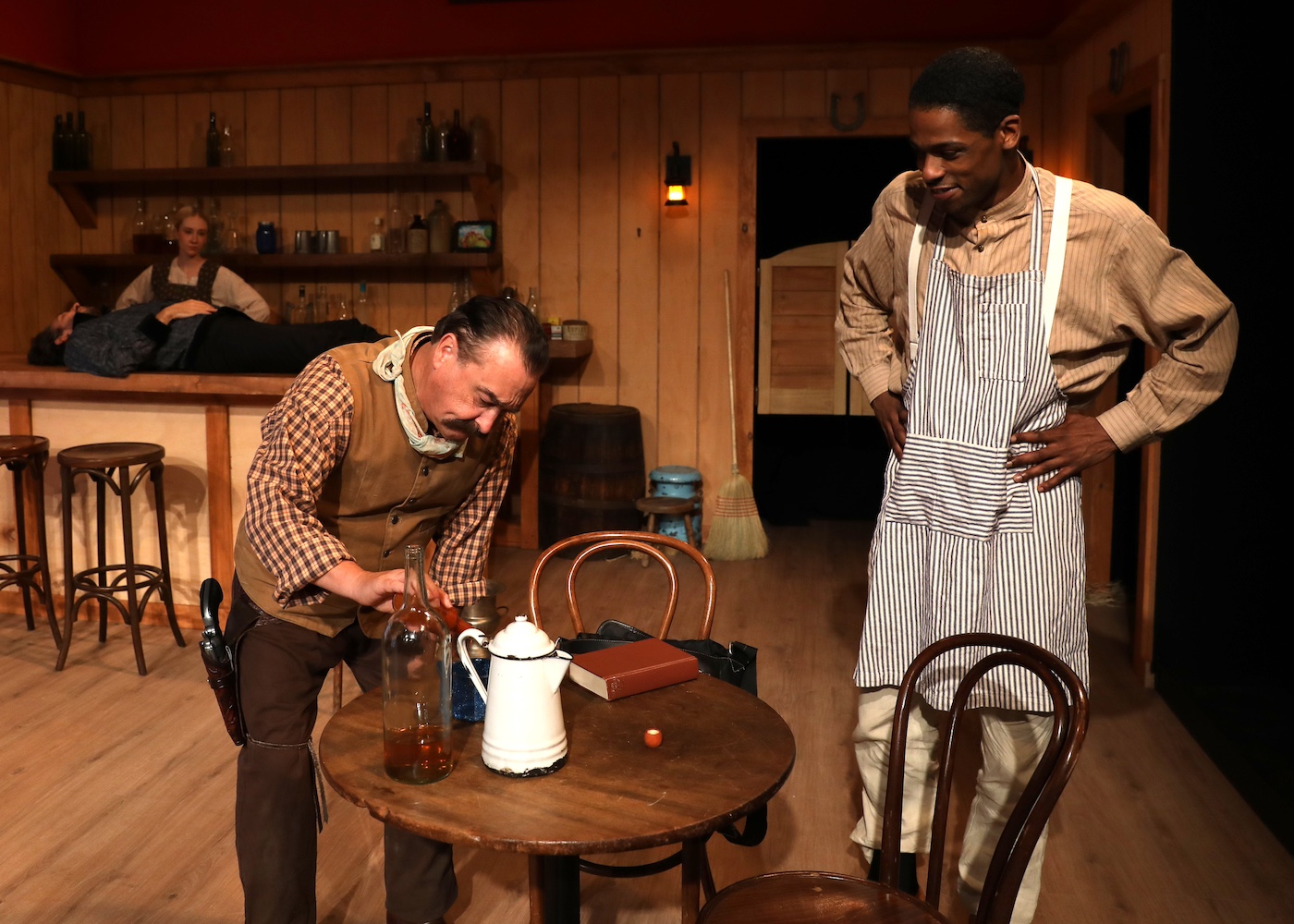***½ / ***** (three and a half out of five stars)
Though the Western, as a genre, offers but a shadow of the cultural force it exerted in the mid-twentieth century, it is frequently dusted off by creators with something to say about America, from the Coen brothers’ No Country For Old Men to Kevin Costner’s would-be Horizon saga. The Man Who Shot Liberty Valance, running at the Gene Frankel Theatre through July 26, puts its own spin on the Wild West, adding nuance to a tale once fit for a John Wayne vehicle. At its core, the story is about a city slicker who goes up against a notorious brigand while trying to build a life for himself in the West. The larger story here is one in which government, urbanization, education, and social progress inevitably subsume the Wild West, squeezing out both the outlaw and the old cowboy whose funeral opens the play.

Based on a short story by Dorothy M. Johnson (which was previously adapted into a 1962 film), The Man Who Shot Liberty Valance adds dimension to the original story by acknowledging and centering the tense racial dynamics at play. Ransome Foster, fresh from New York with the accent to match, shows up beaten half to death by Liberty Valance because Foster thwarted an attempted hate crime. Hallie, the saloon owner torn between Foster and the itinerant gunslinger Bert Barricune, now has a Black adoptive brother, Jim. When Foster asks Hallie if her parents were killed by Cherokee, she scoffs at him and accuses him of reading too many books, an early hint of the play’s reckoning with fact versus fiction. Jethro Compton’s script crackles, bringing wit and flavor to a classic “bad guy comes to town” scenario. If the script eventually lands a little too on-the-nose in the final confrontation (astute audience members will have already picked up on the play’s theme without needing it spelled out), we can forgive it. Though the play was written in 2014, it feels particularly timely now, as education, racial equity, and rule of law itself all come under attack.

With Thomas R. Gordon at the helm as director, the cast do an overall stellar job of knitting the complex bonds of love and resentment among these characters. Derek Jack Chariton, as Liberty Valance himself, possesses the knack of changing the temperature in any room he enters, chilling the blood of anyone in his sights. The live-wire tension in his body and the uncanny power of his voice go a long way toward explaining why the marshal (Scott Zimmerman) is so diligently uninterested in pursuing him. Leighton Samuels, as Ransome Foster, pulls us along on his journey from callow tenderfoot, to reluctant lover, to a man at peace with the prospect of his own death, with a strong core of legalistic morality throughout; this Foster has some of the arrogance, but none of the “sneering humility” of the Ransome Foster from Johnson’s original short story. Samuel Shurtleff’s Bert Barricune knows which way the wind is blowing, but abides by his own code, even at his own expense. Mari Blake’s Hallie shows a prickly wit, with a layer of vulnerability beneath. Daniel Kornegay is utterly charming as Jim Mosten, an open-hearted genius who is clear-sighted enough to know both the joys and the limitations of book learning. Kornegay and Chariton’s scene together at the end of Act I, as Jim and Liberty face off in Foster’s absence, is mesmerizing.

The saloon at the center of it all, Hallie’s birthright, is convincingly constructed (sets by Nino Amari), if a little light on authentic grime, with animal skulls and a piano complementing the many half-full bottles of whiskey to which the characters are continually helping themselves. Reid Sullivan’s lighting design is particularly effective at creating mood and tone, shifting between naturalistic effects and heightened atmosphere. Susan Yanofsky’s costumes effectively fix the time, place, and changing social status of the characters as they grapple with decisions large and small.
The Man Who Shot Liberty Valance. Through July 26 at the Gene Frankel Theatre (24 Bond Street, between The Bowery and Lafayette).












